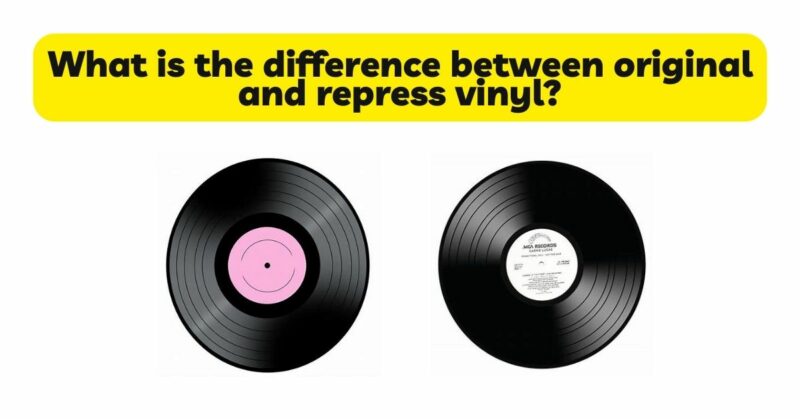Vinyl records have made a remarkable comeback in recent years, attracting both avid collectors and music enthusiasts. As the demand for vinyl continues to grow, the availability of original pressings and repressings of albums has become a common occurrence in the market. Understanding the difference between original and repress vinyl is crucial for collectors and music lovers alike. In this article, we will delve into the nuances of original and repress vinyl, exploring their characteristics, historical significance, and factors that contribute to their value and desirability.
- Original Vinyl Pressings:
Original vinyl pressings refer to the initial production runs of a record that were released when the album first debuted. These pressings were typically manufactured during the time period when the music was originally recorded, often considered the most authentic and sought-after versions by collectors.
a. Historical Significance: Original pressings hold historical significance, capturing the essence of the album’s release. They are linked to the specific era, production techniques, and cultural context in which the music was created.
b. Sound Quality and Mastering: Original pressings are typically mastered from the original analog tapes, providing a sound quality that is faithful to the artist’s intent and the technology available at the time. Many audiophiles believe that these pressings offer the purest representation of the music.
c. Rarity and Collectibility: Original pressings are often limited in quantity, especially for albums released many decades ago. Their scarcity contributes to their collectibility and potential value in the market.
d. First Pressing Markers: Original pressings may include specific markers, such as specific label designs, catalog numbers, matrix or runout codes, or other identifying features that distinguish them as the earliest versions of the record.
- Repress Vinyl:
Repress vinyl refers to subsequent pressings of an album that are manufactured after the initial release. Represses are produced to meet ongoing demand for the album, whether due to continued popularity or the resurgence of vinyl as a format. They are often released years or even decades after the original pressing.
a. Availability and Affordability: Repressings make albums more readily available to a wider audience. They offer an opportunity for music lovers to obtain a copy of a sought-after album that may be scarce or prohibitively expensive as an original pressing.
b. Variations in Manufacturing: Repressings can introduce variations in manufacturing techniques and quality compared to original pressings. Changes in pressing plants, materials, mastering techniques, or artwork reproduction may result in subtle differences in sound quality or aesthetics.
c. Reissues and Remastered Editions: Repressings can include reissues or remastered editions of albums, where the original master tapes are revisited and updated for modern listening preferences. These reissues may offer improved sound quality, bonus tracks, or enhanced packaging.
d. Limited Edition and Colored Vinyl: Repressings often include limited edition releases or variants, such as colored vinyl or picture discs, which appeal to collectors and fans looking for unique editions of their favorite albums.
- Factors Affecting Value and Desirability:
The value and desirability of original and repress vinyl are influenced by various factors, including:
a. Rarity and Scarcity: Original pressings are generally rarer and more scarce, particularly for albums released in limited quantities or during specific time periods. This rarity contributes to their higher value in the collector’s market.
b. Condition: The condition of both original and repress vinyl greatly impacts their value. Mint or near-mint condition records, regardless of being original or repress, are generally more desirable and command higher prices.
c. Cultural and Historical Significance: Original pressings tied to significant cultural or historical events, or albums that mark pivotal moments in music history, are highly sought after by collectors and enthusiasts.
d. Artist and Album Popularity: The popularity and influence of the artist and the album itself play a significant role in determining value and desirability. Albums considered iconic or groundbreaking are more likely to be sought after, regardless of whether they are original or repress vinyl.
Conclusion:
Distinguishing between original and repress vinyl is essential for collectors and music lovers seeking to build their record collections. Original pressings offer historical significance, sound quality fidelity, and often greater rarity, while repressings provide accessibility, affordability, and variations in manufacturing and packaging. Both original and repress vinyl have their merits, and their desirability is influenced by factors such as rarity, condition, cultural significance, and artist popularity. Ultimately, the choice between original and repress vinyl depends on personal preferences, budget considerations, and the value one places on authenticity, historical context, and collectibility.


